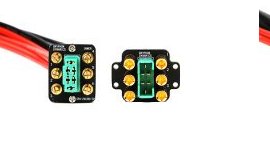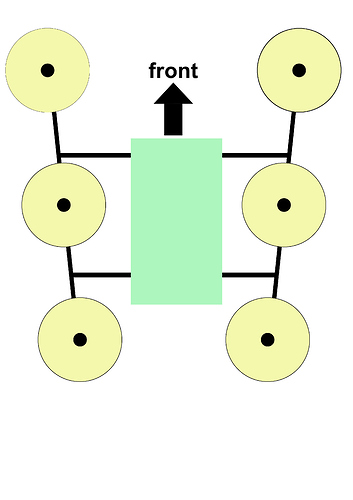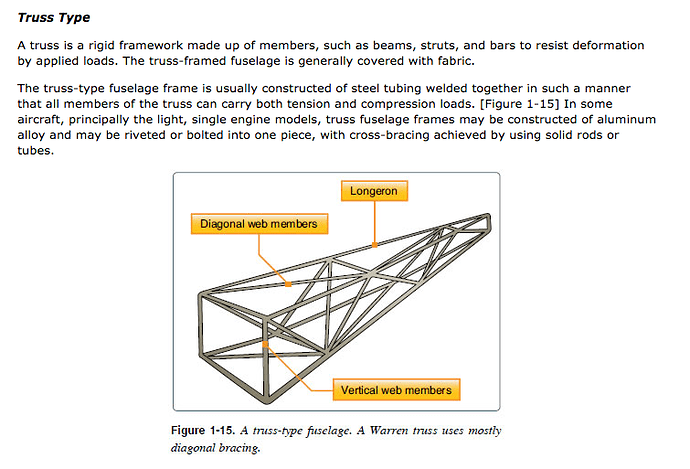There are some types of Monocoque frames that can be made on the cnc for low price. I been testing the validity of composts for some time now and happy with the flight and precision of the enclosed fames. Wires and components also are safe in the shells.
Yes, exactly ![]()
Yes, exactly ![]()
In my next couple of posts, I’m going to be comparing the torsional rigidity of an H4 Alien 680mm frame I recently purchased, with my previous X frame (roughly 620mm diagonal, so similar in size). I have a number of posts in mind, all educational in nature.
I don’t believe there is a “perfect” frame. Everyone has different needs. Some will want a 300-500 class frame. Others will want a 600-750 class. For some, an X frame will be best, for others, a hybrid H or some other shape will be best. Still, there are certain things that come into play with all frames. There are certain guidelines that can produce a stiffer and lighter frame. There are some techniques I’ve learned from others and from my own experiments that can reduce crash damage. I want to bring all of these things to the forefront so anyone who wants to build their own frame can have a bit of a head start.
The spacing of the Mavic front propellers benefits the gimbal also. the extra distance keeps some of the prop wash away reducing jelloing.
Hello,
congratulations for your work, I find it exciting.
I am preparing to set up a new professional UAV, with a payload of 700gr.
I had thought of a frame type tarot 650 or similar, but its weight is excessive.
On the net, I’ve seen the design of Ascending Technologies, with its Astec Falcon 8. I think it’s a very efficient design.
I’m thinking of riding a quadro but for an exacóptero with that design. I do not know if it can be valid for your idea. And I do not know how a frame like that will behave with a pixhawk. I do not know if the pixhawk will manage the central engines well.
Hi David,
I will have a lot more information in upcoming posts but I’ve been busy with work. In the meantime, I don’t think any discussion of multi-rotor frames would be complete without looking at Robert Lefebvre’s paper on the subject:
Given this information, it would probably be more efficient for you to build a Y6. The frame would be lighter and Arducopter in a Pixhawk or Cube would handle it just fine.
Robert Lefebvre @Rob_Lefebvre used to have a video on Youtube where he talked about all of these things but it seems to have been taken down.
04 - An X is Your Best Friend
Or, diagonal braces will help you build lighter and stiffer quadcopter frames!
I used to work in a welding shop. I made hundreds of bar stools, gates, roll bars, roll cages, trailer hitches, toolboxes, and many other things. When working with steel, weight usually isn’t your first priority, although cost can be. If you can use 3/8" thick plate instead of 1" plate, you will save money. But will it be as strong? The answer is YES, if you use diagonal or “X” bracing. Here are a couple of illustrations from Metal Arts Press:
In the first drawing, the same material is arranged diagonally resulting in a structure that’s 36 times stronger (and slightly lighter).
In the second drawing, 60 percent thinner material is arranged diagonally to make a structure that’s lighter AND stronger (0.001 degree twist vs 1.84 degree twist in torsion).
This concept is used everywhere, yet I rarely see it used on commercially produced multi-rotor frames or frame kits. The airplane community uses diagonal bracing all the time. Why don’t we?
In my next few posts, I’ll demonstrate diagonal bracing on a prototype Hybrid-H frame. I will show how you can build a lighter, stronger, and cheaper frame. Hopefully you’ll see some surprising results. I’ve omitted a lot of complicated math and formulas because I don’t think they’re necessary to make the point. If you want to dig deeper, I’ve included some links to the materials I’ve been studying…
Source Materials:
- http://www.metalartspress.com/books/chapters/chapter-13-design-tips
- http://content.aviation-safety-bureau.com/allmembers/faa-h-8083-31-amt-airframe-vol-1/sections/chapter-1.php
- https://www.fhwa.dot.gov/bridge/steel/pubs/hif16002/volume13.pdf
- https://www.aisc.org/globalassets/aisc/research-library/bracing-for-stability.pdf
Loving this blog!!! Keep up the great work!!
Just noticed this which is doing the rounds on media at the moment because it’s dropped to $350:
https://www.amazon.co.uk/YUNEEC-TYPHOON-Startup-Version-Drone/dp/B019RWELDS
If you’re using molds to produce the frames commercially then this is good, but is there an easy and practical way of doing diagonal braces at the DIY level?
thrilling,
I’m about to build my quad or hexa with a maximum 3,300 gr mote, and I’ll wait for your next post.
YES! And I’m going to demonstrate it as soon as I finish putting some things together for a video.
Loving this blog too.
I just bought a Phantom 4 Pro and own an Inspire 1 Pro and a Matrix G. I love the integrated design of DJI products but want and need the flexibility of arducopter. I really want a seamlessly integrated frame/shell that doesn’t have wires and antennas hanging all over it with the extensibility of ardupilot.
This community rocks!
You can buy a FEM (finite element modeling) program and learn how to run it, but for my knoloedge and thinking also in aerodinamic drag, you can trust this guys design gryphondynamics.co.kr, generally speaking I mean.
Their frames looks extremely heavy
Take a look at the Tarot 650Sport (they may have upgraded/replaced it by now). I have one and it’s really nice and neat to integrate - the plates act as power distribution and you can hide slim ESCs in the arms. It has retract landing gear and a neat canopy to put over the top, it really looks like a professional quad when completed with no wiring on show. However, it’s quite heavy and doesn’t have huge room for payloads.
@Coby’s dev frame linked above I built in similar fashion with slim ESCs in the arms and no wiring on show. It’s for sure not nearly as pretty but has masses of flexible room for payload on the body rails, and you can stretch the body out as much as you need for extra payload. Looking forward to see what Robert comes up with here.
Those are for heavy loads and they are light as they can be, design of arms is like this diy project Spraying Weeds with a Drone
They know what they’re doing by geometry, frame concept and materials, but details like detachable and motor mounts… well, IMHO prety near where has to be.
As we had already said , a monocoque carbon frame would be lighter and better .
Just the frame of their quad/octo is 3000 grams , so these copters cannot be efficient.
I have also serious doubts about their power connection system.

After months of use with high Ampere and dust, rain, humidity , the risk of bad connection is really high IMO.
In my 9 years experience I have learn an severe lesson:
**The most safe multirotor will always been the more efficient **
So this kind of frame will never be my choice even if they are well build and have a great look.
You’re right the lightest the better, but we can do some simple maths about it.
Frame/mtom could be a parameter, also frame/payload…
Frame : 3kg for the 1400mm
Max Useful Load : 40kg/88lbs
I do not believe everything that it is written in the specs of vendors.
How many people needs 40 kg of payload ?
In a lot of countries over 25 kg AUW , it is not simple to comply UAV rules.
Finally if I had to lift 40 kg of payload I would not certainly use a multirotor.
Thanks fnoop. I am looking for something that can carry 1.5kg - gimbal, camera, lidar.
S800 (old) or S900 frame if wanting to go ready to run frame+esc+motors



